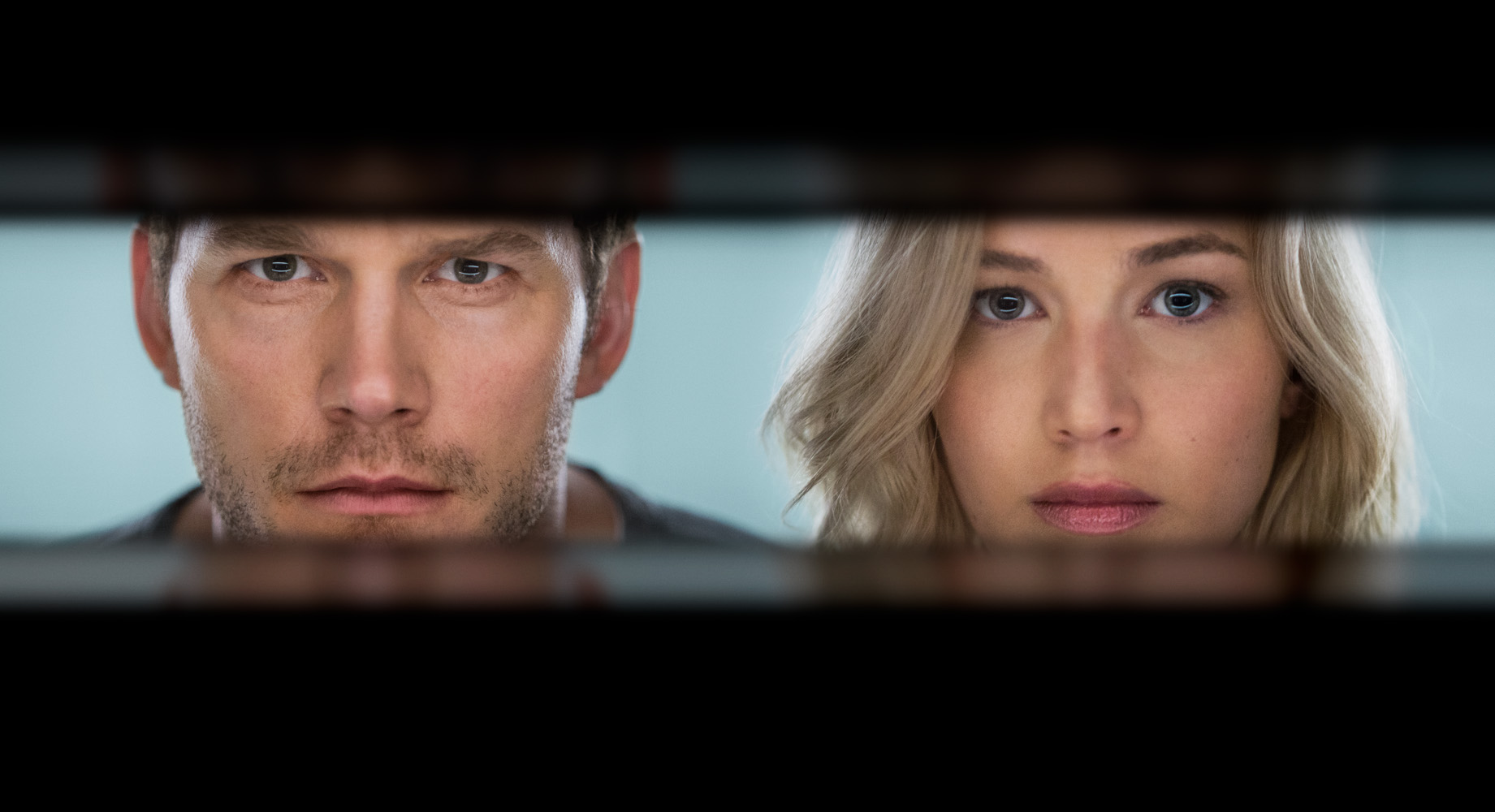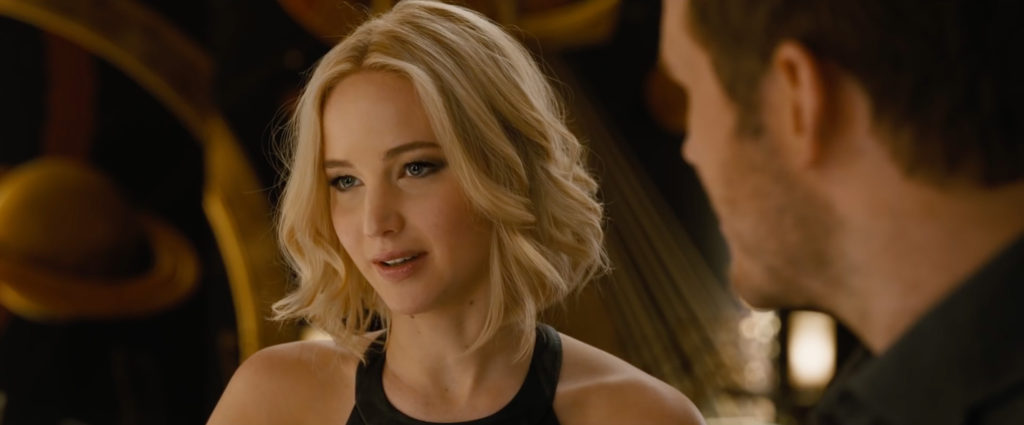The Stars, Our Destination: Or Why Sci-Fi Fans Need to Watch “Passengers”
Jan 6, 2017 • Karl R. De Mesa

Jan 6, 2017 • Karl R. De Mesa
I love sci-fi movies. There’s a certain point where prophesying science fiction catches up to current technology, enabling filmmakers to render onscreen what would’ve taken plenty of man hours, or at least a ton of extras, to complete in the days when the only way you could simulate a spaceship getting rammed is for actors to bounce up and down in sync (sorry, fellow Trekkies). Sigh, the days of analog.
As it stands, the fascination with the detail and realism you can craft in CGI and mix with live action has been rendered academic. Dream it and a reasonably competent animation or post-prod house can make it real; down to the floating water bubble in zero grav. Which has made the Hollywood science fiction movies of recent years all the better.
Passengers joins the ranks of story-driven space opera where the tech takes a backseat to problems of the human condition; am talking about Christopher Nolan’s Interstellar and Alfonso Cuaron’s Gravity—which shares more kinship with the latter with its minimalist approach.
Despite the controversy (WHICH WE CAN’T SPOIL FOR YOU) surrounding the story (or actually, because of it) it’s interesting to be having this kind of discussion (whether it’s exploitation, a strain of Stockholm Syndrome, or just plain dickish behavior) within the confines of a sci-fi movie.
Nobody’s talking about Chris Pratt or Jennifer Lawrence’s acting—specially the former, who’s never done a big dramatic leading role (nope, Star Lord doesn’t count). Nobody’s talking about how the CGI fucked up the believability. Nobody’s talking about the plausibility of a 120 year mass migration through space as premise. That’s because everything is well done and, when it comes down to it, the story stands on its own merits and compassionately tackles a real problem facing the character that has no previous moral vocabulary to refer to exactly because of its setting, its circumstances, and its immensity.
It comes right up to your face and asks: well, what would you have done? This, to me, is excellent science fiction storytelling.
So, unless you have something against Pratt or Lawrence and 116 minutes of cinema time devoted to their acting, here are 8 more reasons why you should see what all the hoopla is about.
.
Picture this: two strangers are on a 120-year journey to another planet when their hibernation pods wake them 90 years before their due date out of cryosleep. The two strangers are Jim Preston (Chris Pratt) and Aurora Lane (Jennifer Lawrence) and they seem to have been awakened way too early for a long haul migration from Earth to a distant colony called Homestead II.
Being the only two people on board and endeavoring to find ways to go back into hibernation, they fall in love. Eventually, as they struggle to go back into their pods so they won’t die before the trip is over, they discover that they need to take care of the ship and that their problems are bigger than being alone in a huge vessel with 5,000 other passengers.
It’s a story that has attracted Hollywood for many years, with writer Jon Spaihts’ script landing on the “Black List” of the industry’s best unproduced screenplays. With enough unique twists and revelations, the minimalist cast brings to life a story that increasingly looks like it could be our own, the story of new immigrants pioneering the first highways through the stars and new home planets.
The Avalon is part badass spaceship, part luxury cruise liner. It’s not just a setting but a character in the movie itself.
When the movie opens you can see that the ship has a high-density shield up front as it’s driving through an asteroid belt and diverting any objects from its path. It’s long and gigantic, with three huge revolving blades that make up both the gravitational torque and power needed for long haul space travel.
Each of the three blades represents a different aspect of life on the ship: One blade is the hibernation area, where 5000 passengers are sleeping; another blade is the entertainment blade, where you have the grand concourse; and the third blade is a giant container area, for getting supplies to the distant planet. Connecting the blades is a zero-G elevator.
“The ship is really luxurious, almost like a cruise liner,” said Jennifer Lawrence in the press notes. “There’s an observation deck, a movie theater and grand concourse and amazing rooms.
.
Arthur is the robot—sorry, android—bartender on board the ship and he’s acted to perfection by Michael Sheen.
An android with a remarkably human upper half, he moves with efficiency, grace, and skill, and responds to passengers’ worries and anxieties with a kind word and warm heart—if a little naiveté. Meaning he’s like the caricature of what you’d expect a bartender to be.
“He’s programmed to be the greatest bartender ever,” said Michael Sheen. “He’s empathetic, he’s able to listen, and he mixes a fantastic martini. But there’s a limit to how much he’s interacted with people: he’s usually dealt with thousands of people in very short interactions, but he’s in new territory with Jim, interacting with one person for a very long period of time.”
Part of Sheen’s performance came through a physical transformation, with the help of the on-set special effects team. The team designed a rig to move him swiftly back and forth behind the bar; with Sheen kneeling on the rig, the filmmakers could control his movement, like an android’s—later painting out Sheen’s legs and the rig with a robotic stand.
Sheen needed to be prepared to move with a rig that would start and stop suddenly, without tensing or bracing his body and without revealing any discomfort in his facial expression. “When I accepted the role, I didn’t know what I was getting into,” said Sheen. “The special effects rig moved really fast, but was a great practical build as it made the performance feel more real.”
It’s been theorized by physicists that folding space and time and making use of controlled singularities would be the best way to get from space point A to space point. But since human engineering hasn’t caught up to quantum mechanics the quandary of bringing humans from one point of the galaxy to the next with plausibility is to cryo-freeze them in hibernation sleep.
Which brings us to the hibernation pods of the Avalon. The central feature of each pod tree is an enormous handmade disc light, measuring 12 feet in diameter, above each the tree. The idea is that each light would provide the life force and nutrients to keep the passengers alive.
For filming, the production team built 32 hibernation pods, some more detailed than others. The pods that audiences will see up close on camera, when Jim and Aurora wake up, were designed with hydraulics so they could open and then rise vertically. The pods were made of fiberglass and wood, then decorated by the graphics department, and then laden with electronic tablets to convey the feeling of future technology. These graphics and digital screens brought the set to life.
Cool trivia: during filming on the Hibernation Bay set, 30-plus background extras were put into the sleep pods. The pods were laden with bubble wrap for additional comfort. All of the extras did a great job—some of them actually fell asleep and only got woken up for the lunch break.
.
Interstellar visualized for us the fury of a black hole. Gravity showed us the crushing loneliness of being adrift in space. Passengers has the romance of a spacewalk against the infinity and immensity of celestial bodies through The Avalon’s outdoor area known as The Observatory. Chris Pratt, you smooth playa you.
There’s a scene where Jim Preston finds out that he can’t access any of the swankier coffee choices on the cafeteria meal and instead gets the equivalent of the 3-in-1 sachet. This is because he’s an economy class passenger on-board a luxury liner.
Later, when Aurora wakes up, he finds out just how far down the economic totem pole he is as he watches her get a meal with a juicy steak. It’s great to see that class distinctions haven’t completely disappeared even the next planet over. It’s both comforting and appalling.
You can also see this in the difference in their living quarters. Aurora’s Cabin is the equivalent of a new York luxury apartment: highlighted by warm gold and amber tones and located in room 424 of the gold-class cabin of the spaceship. The circular cabin combines a limited palette of mauves and aubergines, creams, and silver decorate the space. There are different tones of metallic from white gold to aluminum and steel.
By contrast, Jim’s accommodation on a lower deck has a utilitarian feel. Like a low-rise basement unit in a Brooklyn brownstone. His cabin is a small and dark space with crude rubber matting, a cramped bathroom, and a fold-out bed, showcasing the comparison in the classes of travel available on the spaceship.
Connecting the cabins are a series of corridors that are designed with warm tones to be beautiful and calming, but with a hint of menace. There are more signs that the Avalon is a cruise liner. Like the Grand Concourse area: a futuristic type of shopping mall space on the ship, complete with storefronts, exercise facilities, a universe of restaurants including Japanese, Mexican, French restaurants, as well as a nod to days gone by with an art deco-themed bar where Arthur the bartender holds court. Other amenities include a basketball court, dance machine auditorium, swimming pool, a movie theater, and a communication center where passengers can send messages to Earth.
.
This nail-biting scene. And a few other gnarly plot twists and revelations to go with them in an escalating FUBAR intensity.

At it’s core, the story of the ailing spaceship Avalon is the story of two misfits from absurdly different backgrounds making the most of their stay together. Was love fated or was it just human nature? Were the two awakened by accident or is something more sinister going on in the ship?
Jim Preston was a mechanic and handyman back on Earth and while his technical skills are high, his social skills are really abysmal. He acts like he’s never really had a girlfriend, and he doesn’t really know how to behave around women.
In contrast to Jim’s working-class hero, Aurora Lane is part of a different social circle. She is a New York writer with a great assignment—she is making the 120-year journey to Homestead II, the colony planet, then she’ll make the 120-year journey home. She is determined to be the first person in human history to make the round trip.
“It’s such a huge decision to make,” said Lawrence in the press notes. “It’s a 120-year journey—when you arrive [back on Earth], everyone you know will be dead. You have to start a brand new life on a brand new planet that you’ve never been to. I can’t imagine saying goodbye to everybody that I know and love—I understand her thirst for more.”
All photos courtesy of COLUMBIA PICTURES.
“Passengers” is now showing in Metro Manila cinemas.
Karl R. De Mesa is a journalist and writer who co-hosts the combat sports podcast DSTRY.MNL and the dark arts and entertainment podcast Kill the Lights. His latest book is "Radiant Void," a collection of non-fiction that was a finalist in the Philippine National Book Awards.
Input your search keywords and press Enter.
